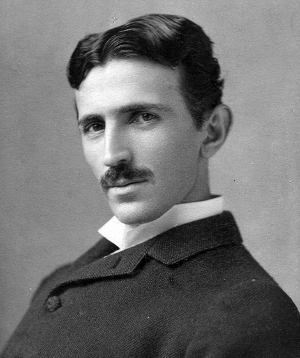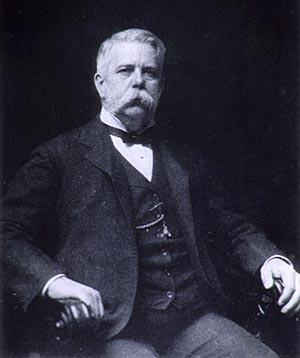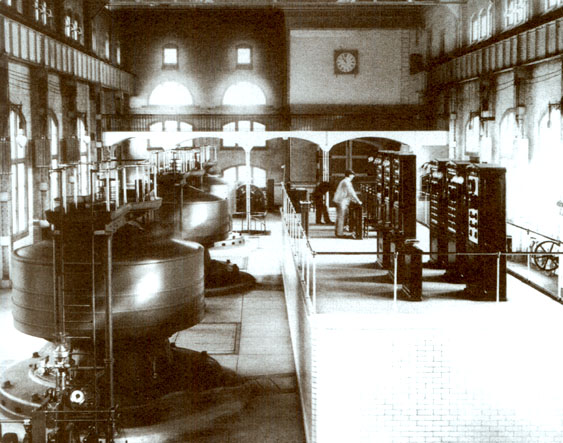Alternating Current (AC) vs. Direct Current (DC)
Battle of the Currents
Almost every home and business is wired for AC. However, this was not an overnight decision. In the late 1880s, a variety of inventions across the United States and Europe led to a full-scale battle between alternating current and direct current distribution.
In 1886, Ganz Works, an electric company located in Budapest, electrified all of Rome with AC. Thomas Edison, on the other hand, had constructed 121 DC power stations in the United States by 1887. A turning point in the battle came when George Westinghouse, a famous industrialist from Pittsburgh, purchased Nikola Tesla's patents for AC motors and transmission the next year.
AC vs. DC
In the late 1800s, DC could not be easily converted to high voltages. As a result, Edison proposed a system of small, local power plants that would power individual neighborhoods or city sections. Power was distributed using three wires from the power plant: +110 volts, 0 volts, and -110 volts. Lights and motors could be connected between either the +110V or 110V socket and 0V (neutral). 110V allowed for some voltage drop between the plant and the load (home, office, etc.).
Even though the voltage drop across the power lines was accounted for, power plants needed to be located within 1 mile of the end user. This limitation made power distribution in rural areas extremely difficult, if not impossible.
 |
 |
| Nikola Tesla (Image courtesy of wikipedia.org) | George Westinghouse (Image courtesy of pbs.org) |
With Tesla's patents, Westinghouse worked to perfect the AC distribution system. Transformers provided an inexpensive method to step up the voltage of AC to several thousand volts and back down to usable levels. At higher voltages, the same power could be transmitted at much lower current, which meant less power lost due to resistance in the wires. As a result, large power plants could be located many miles away and service a greater number of people and buildings.
Edison's Smear Campaign
Over the next few years, Edison ran a campaign to highly discourage the use of AC in the United States, which included lobbying state legislatures and spreading disinformation about AC. Edison also directed several technicians to publicly electrocute animals with AC in an attempt to show that AC was more dangerous than DC. In attempt to display these dangers, Harold P. Brown and Arthur Kennelly, employees of Edison, designed the first electric chair for the state of New York using AC.
The Rise of AC
In 1891, the International Electro-Technical Exhibition was held in Frankfurt, Germany and displayed the first long distance transmission of three-phase AC, which powered lights and motors at the exhibition. Several representatives from what would become General Electric were present and were subsequently impressed by the display. The following year, General Electric formed and began to invest in AC technology.
Westinghouse won a contract in 1893 to build a hydroelectric dam to harness the power of Niagara falls and transmit AC to Buffalo, NY. The project was completed on November 16, 1896 and AC power began to power industries in Buffalo. This milestone marked the decline of DC in the United States. While Europe would adopt an AC standard of 220-240 volts at 50 Hz, the standard in North America would become 120 volts at 60 Hz.
High-Voltage Direct Current (HVDC)
Swiss engineer René Thury used a series of motor-generators to create a high-voltage DC system in the 1880s, which could be used to transmit DC power over long distances. However, due to the high cost and maintenance of the Thury systems, HVDC was never adopted for almost a century.
With the invention of semiconductor electronics in the 1970s, economically transforming between AC and DC became possible. Specialized equipment could be used to generate high voltage DC power (some reaching 800 kV). Parts of Europe have begun to employ HVDC lines to electrically connect various countries.
HVDC lines experience less loss than equivalent AC lines over extremely long distances. Additionally, HVDC allows different AC systems (e.g. 50 Hz and 60 Hz) to be connected. Despite its advantages, HVDC systems are more costly and less reliable than the common AC systems.
In the end, Edison, Tesla, and Westinghouse may have their wishes come true. AC and DC can coexist and each serve a purpose.

